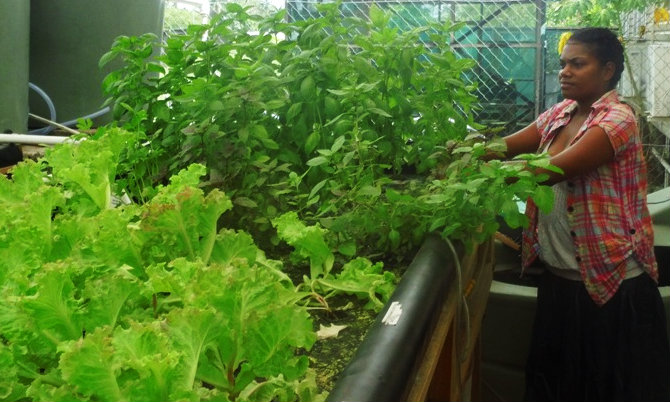AQUAPONICS could be the way forward for agriculture in Fiji in adapting to climate change and doubling revenues of farmers at the same time.
The food production system was widely discussed at the recent Women Defending the Commons symposium in Kadavu drawing the attention of various women’s club and Soqosoqo Vakamarama groups around the country.
Pacific Community’s (SPC) Penina Ravunamoce explained they had been investigating the new food production system known as aquaponic to grow fish and vegetables at their plant nursery in Suva.
In a nutshell, Ms Ravunamoce said the system involved growing of vegetables in waters supported by stones and using fish waste to manure crops.
She said the system was a sustainable method of raising both fish and vegetables.
“In aquaponics, the waste from fish fed on pellet feed is broken down by bacteria into nitrates, which are then taken up by the plants,” she said.
“The plants extract the water and nutrients they need to grow, cleaning the water, which is then pumped back into the fish tanks.”
Ms Ravunamoce said the system used a small amount of space compared to traditional agriculture or fish farming, and had minimal environmental impact because water and nutrients were recycled instead of discharged.
Since the system was independent of soil and recycled freshwater Ms Ravunamoce explained it could aid with climate change adaptation.
The fact that the system did not require soil and could be set up in the consumer’s own backyard, Ms Ravunamoce said it reducing transportation costs involved in traveling to markets and made fresh produce readily available for consumption.
She said that in their nursery they have grown a variety of vegetables including lettuces, basil, tomatoes, capsicum, rourou, celery, strawberries and cabbages.
However, Ms Ravunamoce said aquaponics system required a reliable supply of electricity to run a water pump and air bubbler, and the availability of affordable hardware materials for the construction of tanks and a greenhouse roof.
The operator of the aquaponics system should understand the needs of both fish and plants, and provide daily attention to keep them healthy.
Therefore she said the more the fish were fed the more waste materials the plants would receive.
As the fish grew, Ms Ravunamoce said they could be transferred or sold or even consumed by the farmer.
Ms Ravunamoce said the Tilapia fish were used in the aquaponic system.




